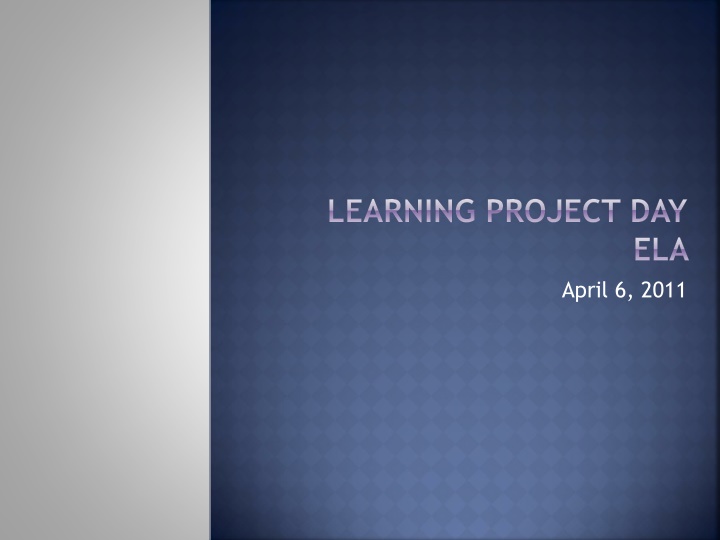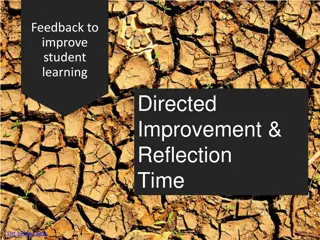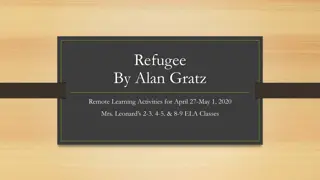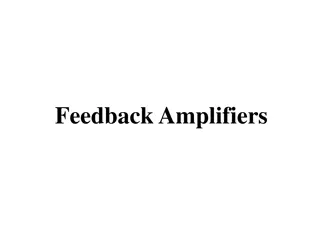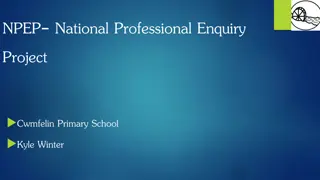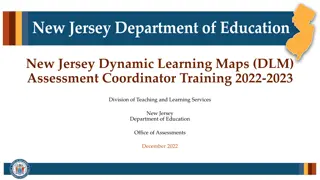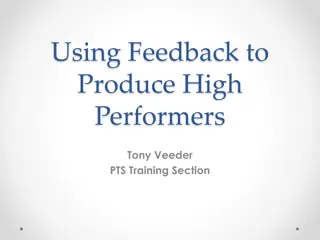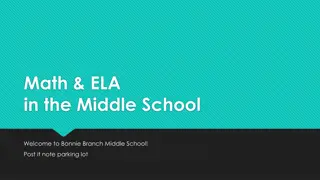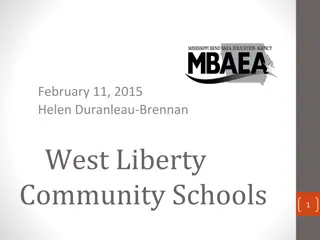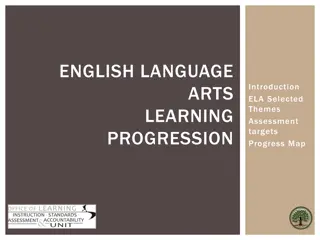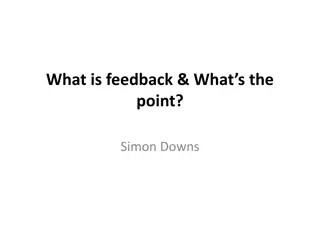Enhancing Feedback Strategies in ELA Learning Project Day
Refine understanding of ELA, engage with student exemplars, and design constructive feedback in a structured agenda. Activities include generating feedback, digging deeper into feedback processes, and considering the impact of timely and specific feedback on student growth in learning and skills. Collaborate with partners to enhance feedback strategies utilizing provided rubrics for assessment and learning purposes.
Download Presentation

Please find below an Image/Link to download the presentation.
The content on the website is provided AS IS for your information and personal use only. It may not be sold, licensed, or shared on other websites without obtaining consent from the author.If you encounter any issues during the download, it is possible that the publisher has removed the file from their server.
You are allowed to download the files provided on this website for personal or commercial use, subject to the condition that they are used lawfully. All files are the property of their respective owners.
The content on the website is provided AS IS for your information and personal use only. It may not be sold, licensed, or shared on other websites without obtaining consent from the author.
E N D
Presentation Transcript
LEARNING PROJECT DAY ELA April 6, 2011
WHAT IS OUR PURPOSE TODAY? Refine our understanding of ELA Engage with student exemplars and rubrics and designing constructive feedback Plan put knowledge into action
AGENDA 9:00-10:15 10:15 10:30 10:30 11:00 11:00 12:00 12:00 12:45 12:45 2:00 2:00 2:10 2:10 2:45 2:45 3:00 Exemplars and feedback Coffee break Reviewing the pieces Working together Lunch Working together Coffee break Gradebook and reporting Parking lot and reflection
DIGGING IN Feedback and exemplars
GENERATING FEEDBACK Find a partner who teaches in a different school Read the student exemplars together Generate feedback or questions you might share with students (20 minutes)
DIGGING DEEPER In your pairing, consider the following questions: What is important when offering feedback? What makes the process most successful? When is feedback ineffective? What additional information is important when crafting feedback? (10 minutes)
OBSERVATIONS AND WONDERS
CONSIDER Timely and specific feedback is the greatest contributing factor to growth in learning and skills.
THE LEARNING CONTINUUM These exemplars are from grade five and six students. The grade five samples were written in the fall and the grade six were written in April. They represent both males and females. Can you sort the samples into grade levels? (5 minutes)
ENHANCING OUR FEEDBACK The rubrics you have been given articulate the criteria for this writing assignment at each grade level. With your partner, consider: How will your feedback change now that you have more information? How and when can you imagine delivering feedback to the students? How could you use the rubrics as Assessment as Learning, Assessment for Learning and Assessment of Learning? (20 minutes)
GROUPS OF FOUR Combine with another group and share your thoughts, findings and feedback. Consider: How can we use feedback to move every student forward? (10 minutes)
FEEDBACK Comes before, during, as well as after the learning Is easily understood and relates directly to the learning Is specific, so performance can improve not simply do more or do better Is not simply making corrections which is an ineffective practice Involves choice on the part of the learner as to the type of feedback and how to receive it Is part of an ongoing conversation about the learning (timely) Is in comparison to models, exemplars, samples, or descriptions Originates from both teachers and learners Is about the characteristics of learning and not about characteristics of the student
FEEDBACK IDEAS Traffic lights/ coloured cards (red, yellow, green, orange and blue) Dart boards (bulls eye, getting there, working on it, needs improvement) Highlighter (Pink Tickled pink, Yellow Goal area) Error analysis 3 wrongs and a right Conversations, journal entries, rubrics, emails, peer feedback sessions Sharing writing group revision
HOW RUBRICS CAN BE USED IN THE CLASSROOM: Before students are introduced to rubrics, they share what they already know about quality in the skill or product you are focusing on. Students use the rubric to practice judging the quality of anonymous work. Some assignments come home marked with descriptions of strengths and areas for improvement, rather than grades. The wording reflects the concepts in the rubrics. Students use the rubric to judge the quality of their own work: they identify strengths and set goals for improvement. Comments may focus on one or two features of quality rather than all criteria represented on the rubric. Students have the opportunity to track their achievement and share their progress with their parents.
REVIEWING THE PIECES Unit planners, BDA charts, rubrics, etc.
GOAL AREAS Compose and create - expressive strand and includes speaking, representing and writing Comprehend and respond receptive strand and includes listening, viewing and reading Assess and reflect reflecting on self and others and setting goals for language learning
EMPHASIS In the C and C goal area, the greatest emphasis rests on the work students do before producing a product In C and R, this emphasis shifts to the work students do during their interaction with texts
MINIMUM OF FIVE UNITS IN FIVE CONTEXTS Five Contexts: 1. Personal and Philosophical 2. Social, cultural and historical 3. Imaginative and literary 4. Communicative 5. Environmental and technological TYPE OF UNIT Multi-genre thematic Multi-genre inquiry and/or interdisciplinary Author or genre study NUMBER OF UNITS per YEAR 3 (minimum) 1 (minimum) 1 (maximum)
What we do with students before, during and after engaging in a text will determine their growth, engagement and success.
HOW DO THESE SUPPORTS HELP? Unit planner and/or pacing guide 6 strands BDA charts focus on learning strategies, essential questions, enduring understandings and knowledge Sorting documents menu for tracking learning; tasks, strategies and criteria Completed rubrics and task sheets what do the rubrics tell us?
RUBRIC EXPLORATION With a partner, choose a rubric at your grade level and explore it. What does it tell us about our BDA charts? Our Learning Plans? How can we use them formatively? Summatively? How do we make them clear to students?
WORKING TOGETHER What do we have left to do? Sharing the load and using what we already have
GRADE BOOK AND REPORTING
RUBRIC TEMPLATES IN ELA Comprehend & Respond Specific Criteria Compose & Create Specific Criteria Information & Ideas Text Structure & Features Respond to & Interpret Text Message & Meaning Organization & Coherence Style & Language Choices 1. 1. 2. 2. 3. 3.
RUBRIC FOR NARRATIVE TEXT GRADE 5 Great work! This is going extra well for you! You did it and you did it on your own! Good start. You are beginning to make sense of this on your own. You can do it. Spend some extra time with the criteria and ask for help. The topic for the narrative was established early on, was immediately engaging, and was developed skillfully throughout. The topic for the narrative was established early on and developed clearly throughout. The topic for the narrative was established but, at times, was lost in the story. More time should be spent in the before stage, clarifying the intent of the narrative. Despite assistance, the narrative s topic was never fully developed and therefore, the message was lost. Much more time needs to be spent in the before stage. Much more attention needs to be given to considering and developing a point of view. Focus on central idea or topic First person point of view was developed and maintained throughout the essay. The point of view added compelling relevance to the story. The topic, language and organization are extremely well-suit to the intended audience and purpose. There is clear understanding of the reason for the narrative. First person point of view was developed and maintained throughout the essay. The point of view was convincing and relevant. The topic and language and are appropriate for the audience and purpose. Some help is needed to develop a first person point of view which is maintained throughout the essay. Develops a point of view Message/Meaning There are aspects of the topic, language and/or organization that do not suit the audience and purpose. More time should be spent considering who will be reading the narrative and why the story is being told. Despite assistance, there is clear difficulty with writing to match the audience and purpose. More clarification of criteria would help. A Awareness of audience and purpose
PARKING LOT AND REFLECTION
3 things I have learned about ELA and planning 2 things I feel great about 1 thing I still need to continue to practice
THANK YOU AND SAFE TRAVELS!!
